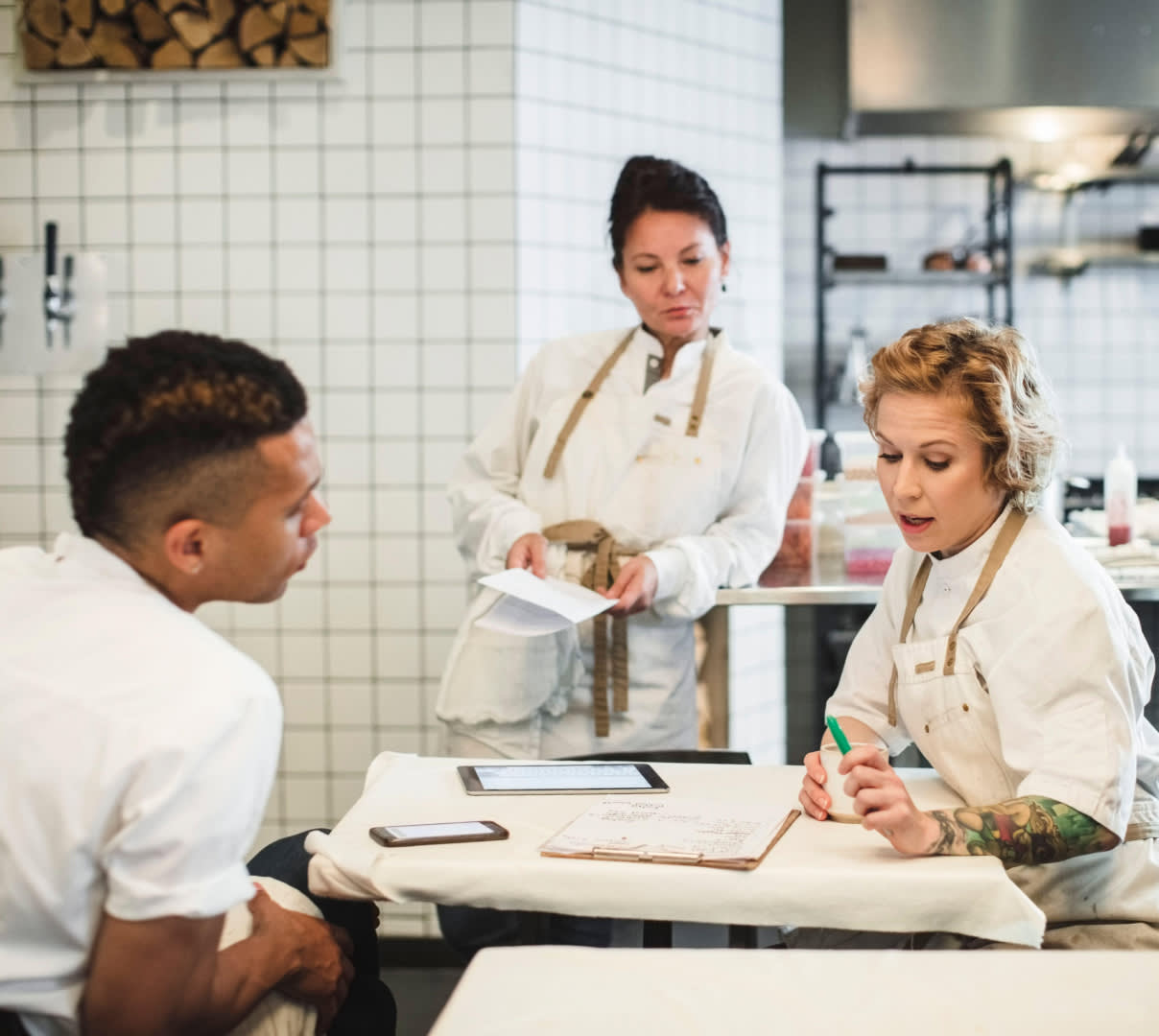Managing restaurant operations effectively will ensure your restaurant has the ingredients, processes, and financial resources necessary to succeed. In this article, we'll provide an overview of restaurant operations and six best practices to ensure your restaurant runs smoothly during each shift.
Restaurant operations: An overview
Restaurant operations encompass a number of responsibilities across key areas of the business, including:
Purchasing: The process of buying raw ingredients and supplies needed to create your menu items. This responsibility includes building relationships with suppliers and managing your inventory to ensure you don't buy too much or too little.
Food prep: The way the kitchen staff creates menu items — from chopping ingredients to cooking meals to plating dishes. Understanding the amount of time it takes to prepare each ingredient and each dish will help your staff get orders to customers in a timely manner.
Service: How front-of-house team members (e.g., hosts, servers, and bartenders) interact with guests. Your service impacts your restaurant's atmosphere and culture. By setting up smooth front-of-house operations, you'll create a positive experience that keeps dine-in and delivery customers coming back.
Cleanup: Restaurants must follow specific sanitation guidelines in order to stay in business. From taking out the trash to tidying the bathrooms to clearing tables, it's important to establish cleaning processes for all areas of the restaurant to keep your operation up to local health codes.
Accounting: Keeping a close tab on your restaurant finances is critical. Operators can maintain restaurant profitability by tracking sales and expenses, finding ways to reduce costs, and forecasting restaurant sales ahead of busy or slow seasons.
How to improve restaurant operations
Looking to optimize the day-to-day processes of your restaurant? The following tips will help you set the foundation for effective restaurant operations management.
Conduct a SWOT analysis
Standardize operational processes and training
Maintain an accurate P&L and monitor costs closely
Reduce food waste
Set up efficient restaurant delivery operations
Develop an effective communication strategy
1. Conduct a SWOT analysis
Before taking steps to improve your restaurant operations, it's helpful to first understand your current status. Conducting a Strength, Weakness, Opportunity, and Threat (SWOT) analysis for your restaurant enables operators to get a better understanding of their business. This technique will help you identify which areas to focus on when improving your restaurant operations.
To start, write down what you and your team think are your strengths, weaknesses, opportunities, and threats. Ask yourself key questions, such as:
What makes customers choose your restaurant over others?
What brings repeat customers back?
Is a complicated point of sale system slowing you down?
Is your best-selling dish not profitable?
2. Standardize operational processes and training
Creating a standard process for your restaurant operations not only increases efficiency but makes it easier to delegate to your team. Take the time to write down steps for key tasks, such as cleanup, food safety protocols, reservation management, and dining room service. Many operators post checklists throughout the restaurant that employees can easily follow.

Find out what you excel at and enjoy doing and keep those in your day-to-day, but rely on others for everything else. You'll be much more successful if you don’t try to do everything yourself.
You can also create a restaurant employee handbook to train your staff and ensure consistency. The manual should include a list of key tasks that are essential to the success of your restaurant, as well as who is responsible for completing them during each shift. The manual should be available and editable in digital format so everyone has access to the most up-to-date information. Be sure to gather input from team members as you create the employee handbook and checklists, as they can help set realistic expectations on what works and what doesn't.
3. Maintain an accurate P&L and monitor costs closely
As the cost of goods and labor continues to increase across the restaurant industry, operators are finding creative ways to maintain profitability. Tracking real-time costs and revenues in a profit and loss (P&L) statement will help you assess your restaurant's financial health and offer insights into how you can improve restaurant operations.
A P&L provides a line-by-line breakdown of where you are making — or draining — money. This report will help you answer questions such as: Are there certain time periods when you can staff fewer people? Can you add delivery services to boost profits? Can you focus on lower-cost marketing channels, such as email marketing? You can then update your operations based on these insights.
4. Reduce food waste
Whether due to over-ordering, over-prepping, or oversized portions, restaurant food is often thrown in landfills. Implementing initiatives to reduce food waste in your restaurant can help you save money and improve sustainability. Start by conducting a waste audit to get a clearer picture of which menu items and ingredients regularly end up in the trash so you can rethink your inventory strategy. You can also create a menu item that uses up surplus ingredients, then launch a limited time offer to promote it. Minimizing food waste not only helps the environment, but you'll also reduce costs and spend money more efficiently.
5. Set up efficient restaurant delivery operations
Creating processes for delivery operations boosts efficiency in the kitchen and helps you generate more positive customer reviews. Start by integrating your third-party delivery service with your POS so your kitchen can seamlessly accept and fulfill orders. Creating a designated pickup area with clearly marked signage in your store also helps delivery drivers and pickup customers immediately know where to go.
Operators can also create checklists before sending a delivery order out. For example, the team at Chicago-based brunch restaurant Yolk started highlighting beverages in yellow marker on their delivery tickets to avoid forgetting them:

We didn’t want to make things like espresso drinks right when the orders came in, since they lose quality while waiting for pickup. Highlighting the beverage on the receipt has really helped our staff remember to grab them and decrease the amount of missing drinks.
Finally, set realistic prep times for delivery orders. DoorDash partners have the option to adjust the prep time for an order based on how busy their kitchen is. This will delay the Dasher pickup time and let the customer know that the delivery will be later than expected.
6. Develop an effective communication strategy
There's no use spending time creating restaurant operations processes if your team doesn't know about them! An effective restaurant communication strategy quickly informs and trains your staff about changes to your menu, service, and operational protocols.
Develop a standardized system to communicate new processes or changes. Leverage an internal restaurant communication method and stick with it — whether it's an all-staff email, group text message, in-person meeting, or bulletin board post.
Apply these best practices in restaurant operations today
Following these restaurant operations best practices will help you keep your team happy and set your business apart from competitors. As you implement operational changes, be sure to gather feedback from staff and customers to understand whether your new processes are working. Restaurant operations are not meant to be set in stone — and you should continue to adjust them to best serve your guests.





